Rio Salado in early spring
Today I actually got outdoors to breathe air, soak up sunbeams, and take a look at what’s up, and what’s in the air. It’d been awhile, and I thought I’d celebrate by passing along some of what’s 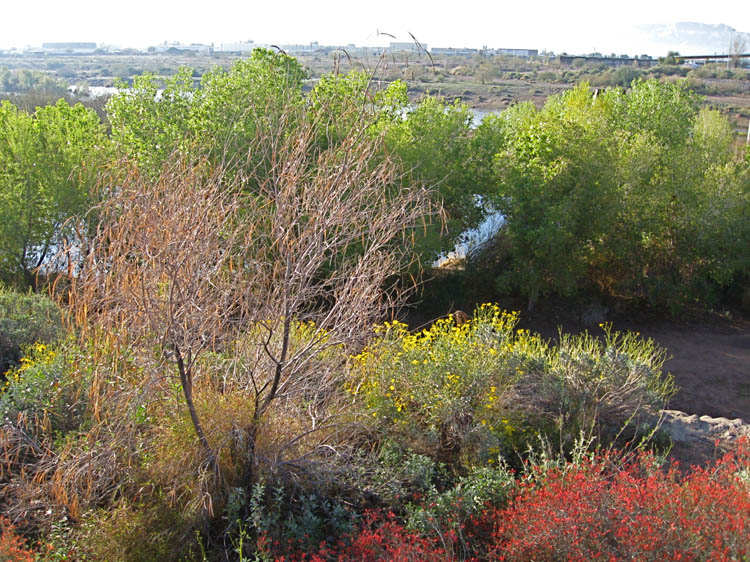 happening along the Salt River, smack in the middle of the City of Phoenix, AZ.
happening along the Salt River, smack in the middle of the City of Phoenix, AZ.
<< green Goodding’s willows, brittle bush, Desert willow, and chuparosa at Rio Salado; photo A.Shock
The Rio Salado Habitat Preservation Area, as it’s officially designated (here is the website), is an ex-horrific-riverside urban dump that’s been cleaned up and improved in order to attract and showcase permanent and migrating wildlife, including birds, mammals, and insects.
Along the Salt River just south of downtown Phoenix, the RSHPA is less than 10 miles downstream from the riparian area at Tempe Town Lake (see here), and has a variety of habitats, from mesquite bosque to shady bands of Goodding’s willows (the bright green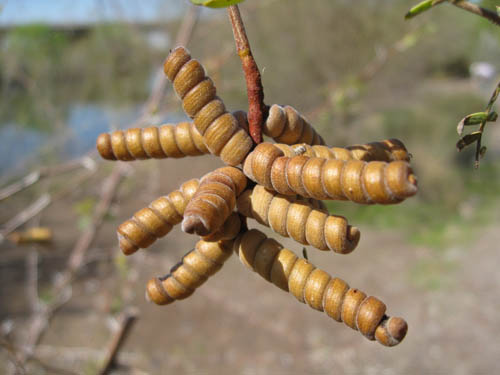 foliage in the photo above.) Each time I visit, the vegetation is better established, both naturally (Goodding’s willows are said to be able to grow something like six feet per year), and with the help of human hands — many native desert and riparian plants have been planted along the bike path and walking trails that weave along the river, on both sides. Right now, the Goodding’s willows are in bloom. The screwbean mesquites (right) are still bare, making their tightly-twisted seed pods stand out against the blue sky, clustered like little brown bouquets of rattlesnake rattles.
foliage in the photo above.) Each time I visit, the vegetation is better established, both naturally (Goodding’s willows are said to be able to grow something like six feet per year), and with the help of human hands — many native desert and riparian plants have been planted along the bike path and walking trails that weave along the river, on both sides. Right now, the Goodding’s willows are in bloom. The screwbean mesquites (right) are still bare, making their tightly-twisted seed pods stand out against the blue sky, clustered like little brown bouquets of rattlesnake rattles.
The river is high today after all of the rain in both the metro basin and in the high country north east of Phoenix, but it’s obviously been higher recently: big piles of flood debris are left on both sides of the trail. 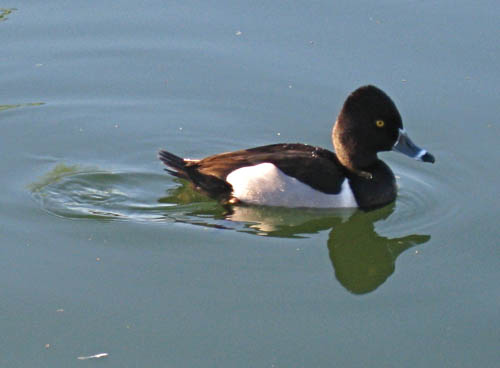 Cormorants (Double-crested and Neotropical), American coots, and Killdeer are common along the river, and the ponds and oxbows host a variety of waterfowl, like this handsome Ringnecked drake (left), Cinnamon teal, and Common moorhens. But we were especially on the lookout for dinky dudes — in this case, an out-of-range straggler, a Black and white warbler that’s been hanging out at the Rio for at least a week. It proved too dinky to photo, but we did get crippling looks at the tiny tourist, wrestling an enormous caterpillar into its gullet. It was keeping company with a Brown creeper, numerous Orange-crowned and Yellow-rumped warblers, Ruby crowned kinglets, a Blue-gray gnatcatcher, and other dinky dudes. A casual couple of hours of birding yielded a list of more than 35 species of birds, including a House wren.
Cormorants (Double-crested and Neotropical), American coots, and Killdeer are common along the river, and the ponds and oxbows host a variety of waterfowl, like this handsome Ringnecked drake (left), Cinnamon teal, and Common moorhens. But we were especially on the lookout for dinky dudes — in this case, an out-of-range straggler, a Black and white warbler that’s been hanging out at the Rio for at least a week. It proved too dinky to photo, but we did get crippling looks at the tiny tourist, wrestling an enormous caterpillar into its gullet. It was keeping company with a Brown creeper, numerous Orange-crowned and Yellow-rumped warblers, Ruby crowned kinglets, a Blue-gray gnatcatcher, and other dinky dudes. A casual couple of hours of birding yielded a list of more than 35 species of birds, including a House wren.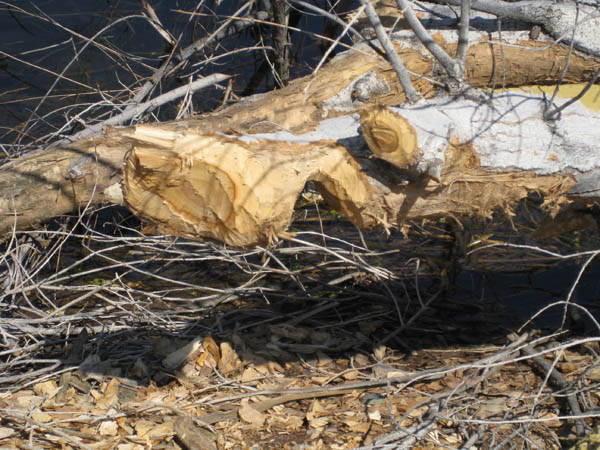
But for me, the surprise of the day was provided by our furry mammalian neighbors: there’s a beaver working the Rio! We didn’t see the critter itself, but check out the evidence of Beavers At Work. right >>
I love the industrious pile of wood chips under the chewed ends of this downed tree.
Anyone birding in the Phoenix area during autumn through spring seasons might wish to 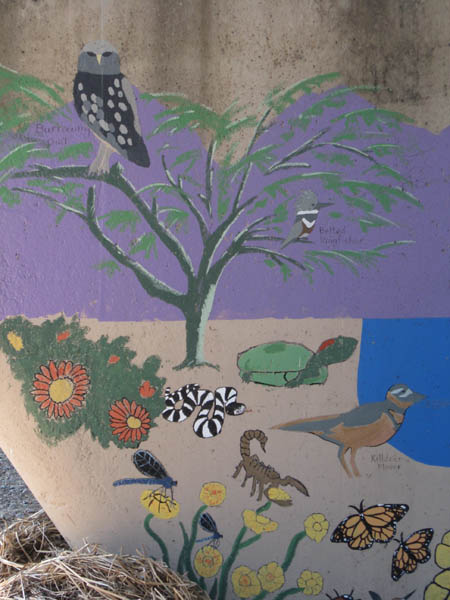 check out RSHPA .
check out RSHPA .
Remember — it’s an urban birding gem, so you might wish to bring a friend, and don’t leave anything valuable in your car.
Don’t be discouraged by the urban nature of this area, it’s got its advantages, too, like some really nice public art along the paths, and under the bridges on otherwise blank concrete supports.
>> Local wildlife painted under Central Ave bridge, RSHPA (all photos A.Shock)
